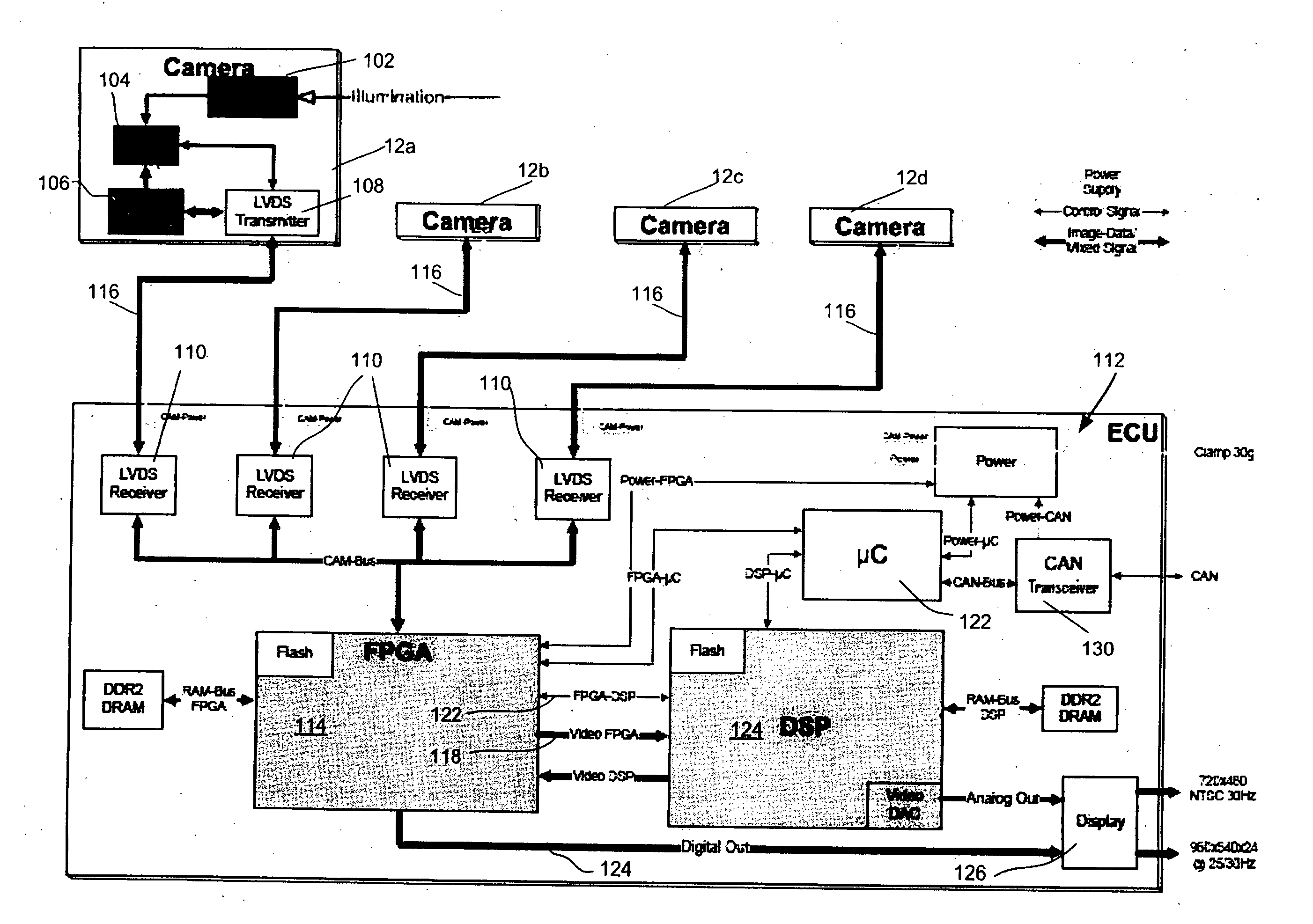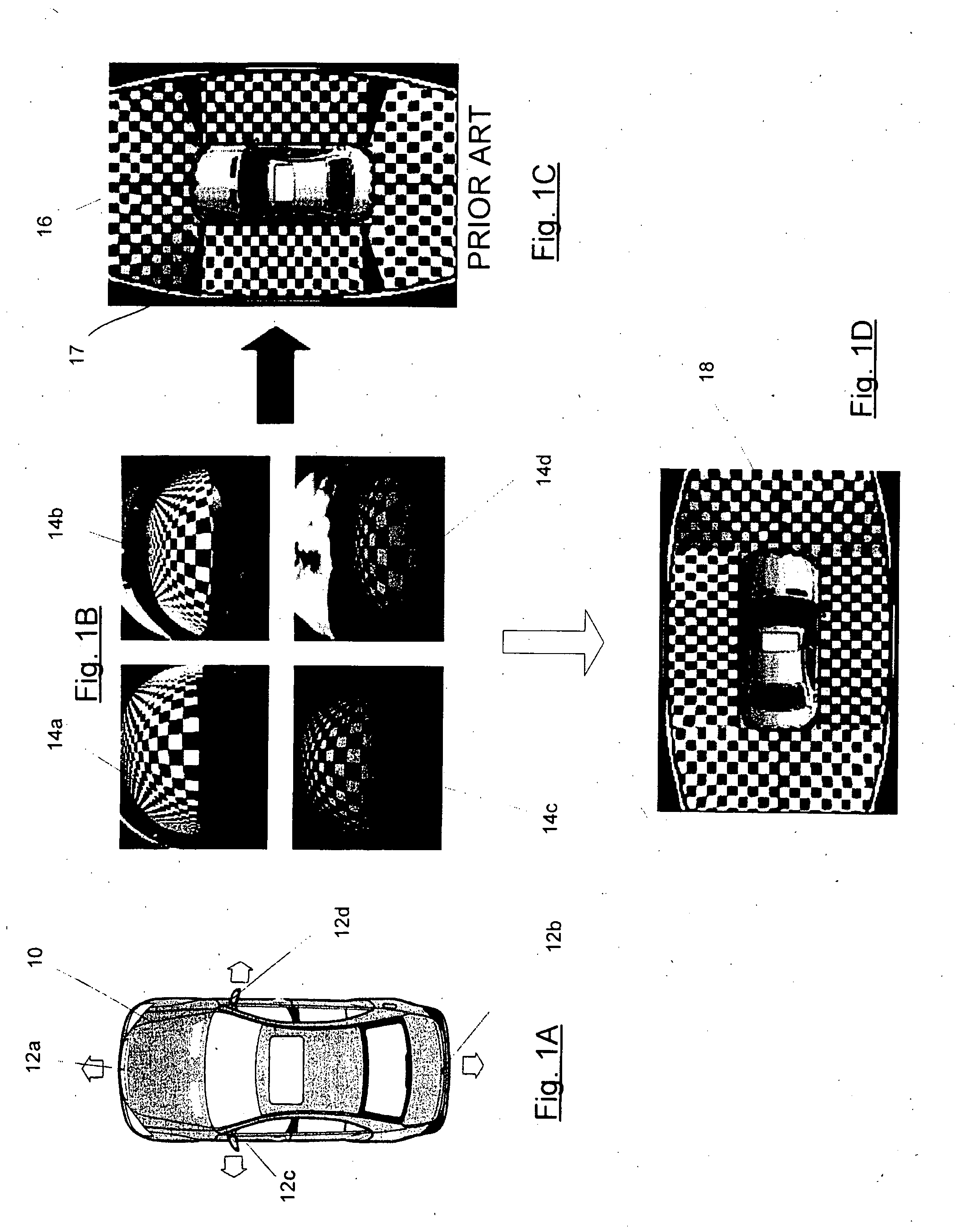Method and system for dynamically calibrating vehicular cameras
a technology of dynamic calibration and vehicular cameras, which is applied in the field of vehicle cameras and vision systems, can solve the problems of not being able to solve the problem of end-of-line assembly line calibration based on end-of-line assembly line, not being able to achieve the effect of solving the problem, and noticeable visual distortion in the composite 360 degree imag
- Summary
- Abstract
- Description
- Claims
- Application Information
AI Technical Summary
Benefits of technology
Problems solved by technology
Method used
Image
Examples
Embodiment Construction
[0060]In the present application, unless the context dictates otherwise, the following terms have the following meanings:
[0061]“ground plane” refers to a real plane parallel to the roadway.
[0062]“image plane” refers to a two-dimensional space provided as an output of a camera viewing a real three-dimensional space.
[0063]“plane at infinity” means all points at infinity, and refers to a plane that is perpendicular to the ground plane.
[0064]“horizon line” is the intersection of the ground plane with the plane at infinity.
[0065]“vanishing point” is a point at which parallel lines in the ground plane seem to converge in an image plane. If the camera is centered between two parallel lines in the ground plane which are parallel to the camera optical axis, the intersection of the two parallel lines is referred to as the “central vanishing point”.
[0066]“principal point” refers to the central vanishing point of a camera when the camera is at its nominal installed position and orientation. Thi...
PUM
 Login to View More
Login to View More Abstract
Description
Claims
Application Information
 Login to View More
Login to View More - R&D
- Intellectual Property
- Life Sciences
- Materials
- Tech Scout
- Unparalleled Data Quality
- Higher Quality Content
- 60% Fewer Hallucinations
Browse by: Latest US Patents, China's latest patents, Technical Efficacy Thesaurus, Application Domain, Technology Topic, Popular Technical Reports.
© 2025 PatSnap. All rights reserved.Legal|Privacy policy|Modern Slavery Act Transparency Statement|Sitemap|About US| Contact US: help@patsnap.com



